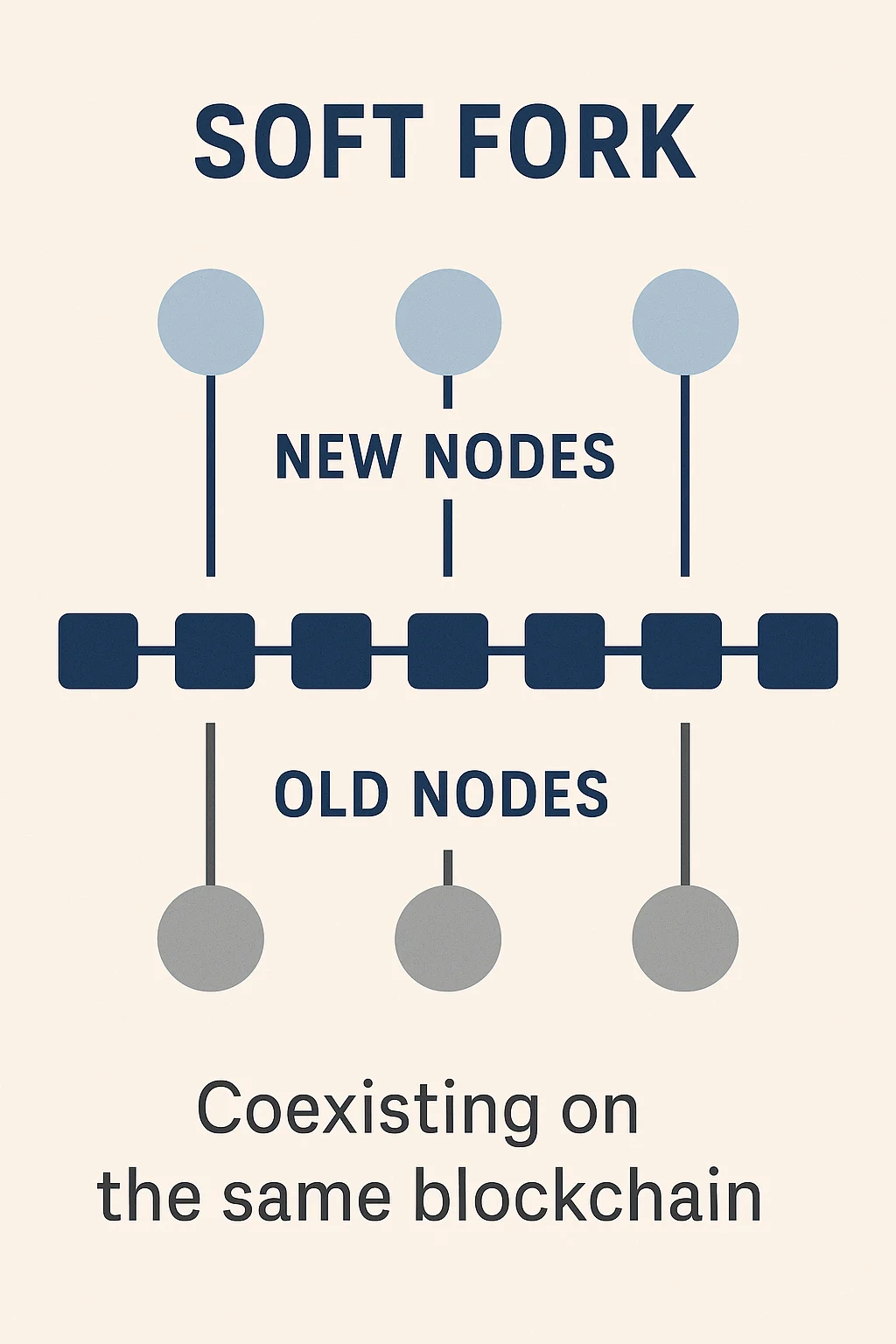Soft Fork
Soft Fork: Backward-Compatible Upgrades
Soft forks tighten blockchain rules without breaking compatibility. They’re the diplomatic approach to network upgrades – everyone can still participate even if they don’t upgrade immediately.
A soft fork is a backward-compatible change to blockchain protocol rules that makes previously valid blocks invalid while keeping previously invalid blocks invalid. Old nodes can still participate in the network without upgrading, though they may not understand new features.
How Soft Forks Work
Rule tightening restricts what’s considered valid without changing fundamental protocol structure. New rules are more restrictive than old ones, so old nodes still accept blocks created under new rules.
Gradual activation often uses signaling mechanisms where miners or validators indicate readiness before rule changes take effect, ensuring smooth transitions.
Feature additions can happen through soft forks by repurposing unused data fields or creating new transaction types that old software treats as valid but doesn’t fully understand.

Real-World Examples
- SegWit activation on Bitcoin increased transaction capacity through soft fork
- Taproot upgrade added privacy and smart contract features to Bitcoin
- EIP-1559 changed Ethereum fee structure through soft fork mechanism
Why Beginners Should Care
Smoother upgrades make soft forks less disruptive than hard forks since the network doesn’t split and old software continues working.
Feature benefits may require wallet or software updates to access, even though the upgrade itself is backward-compatible.
Network security remains intact during soft forks since all nodes continue validating the same blockchain, unlike hard forks that can split hash power.
Related Terms: Hard Fork, SegWit, Network Upgrade, Protocol
